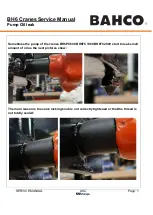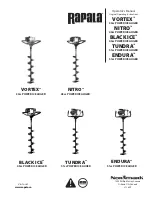
19
© Carlo Gavazzi A/S
Operating principles of the MZC
The MZC can work as a stand-alone zone count system or in a mixed solution together with the Car-
park single spot detection system� In any case the count system consists of a number of count zones,
and each of the zones has a certain number of entry and exit points for the cars� These are called
detection points (DPOs) and this is where the sensors need to be mounted to detect the passing cars�
In order to make the zone count system fully compatible with the single spot detection system, the
MZC transmits its zone count values by emulating a number of single spot segments, depending on
the total number of spaces in the zones� This means that the values for the displays are transmitted on
L2 and the values for the carpark software are transmitted on RS485�
Zones
A zone is typically a level of the parking facility, but can also be a part of a level or even the entire
carpark� A zone has a certain amount of parking spaces available, and the function of the zone count
system is to detect and count the cars entering and leaving the zone and thereby keep track of the
number of available spaces� The MZC transmits on the bus L2 the availability number for each zone,
and thereby allows them to be read by master carpark monitors controlling local or totalizing displays�
Since the slave carpark monitors of the single spot detection system also send their numbers on the
bus L2, it is easy to implement a totalizing display adding numbers from both type of systems�
In order to allow the space availability numbers from the zone count system to be used in the Dupline
Carpark Software, the zone availability numbers are also made available via the two RS485 ports of
the Carpark Counter Module�
Detection Points (DPO)
A detection point is a lane or driveway where cars enter or leave a zone� A typical example of a DPO
is a ramp between two levels, but could also be the entry point from the street into the carpark, or the
exit point� In many cases a detection point is involved in two zones� For example a DPO which is an
exit point for level 2 could at the same time be an entry point for level 3�
Each detection point needs sensors, connected to bus L1, to detect the passing cars� Dupline ultra-
sonic sensors are usually used, but other sensor types like standard photo-electric or loop detectors
can also be used� This is done by connecting the sensor output to a Dupline input module�
The MZC provides the option to use either one or two sensors in each DPO� Two sensors with a
distance of 2-3 m between them is recommended, because this gives the possibility to detect the
direction of the car and also allows more efficient filtering to avoid false detections� Sometimes cars
drive in the wrong direction in a uni-directional lane, and in a two sensor solution the MZC is able to
manage this, so the count is still right� In bi-directional lanes it is mandatory to use two sensors�
When configuring a detection point there is a possibility to define a time-out value� The time-out is
only to be used in case of a long distance (more than 3m) between sensor 1 and sensor 2� The time-
out allows a valid car detection as long as the delay from sensor 1 becomes inactive until sensor 2
becomes active is less than the time-out value� With the typical 2-3 m distance between the sensors,
1 s is the recommended value� Too high value increases the risk of detection faults�
Single sensor DPOs are mainly implemented when it is not possible or difficult to use two sensors,
this could for example be in an outdoor installation with loop detectors�
Initialization and adjustment
In the initial configuration the installer has to define the number of spaces in each zone� The actual
number of available spaces in each zone at the initial stage must also be defined� From that point, the
carpark Counter Module will increment or decrement the zone count values as the cars enter or leave
the zones through the relevant detection points� Since any count system has the issue of accumu-
















































